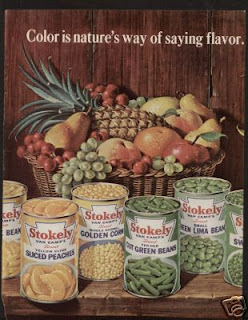 This 1946 animation, with cuts to live action, seeks to develop brand loyalty among grocers worried about their bottom line. Although cast as a simple love story, it's really a tutorial or "how to" for grocers, an "infomercial" in today's parlance.
This 1946 animation, with cuts to live action, seeks to develop brand loyalty among grocers worried about their bottom line. Although cast as a simple love story, it's really a tutorial or "how to" for grocers, an "infomercial" in today's parlance.A decent Smallville type, alter ego to an aging father figure (the store owner), is about to lose his bride-to-be (owner's daughter) to a Lex Luthor type, a villainous high roller and banker named Mr. Squeeze, who uses his petty patriarchal powers to leverage sexual favors and so on (compare with Betty Boop in She Wronged Him Right (a 1934 "mortgage melodrama")).
Mr. Easy, a boy pixie capable of time travel, appears from the engagement ring and educates our young hero about the Stokely-Van Camp line of canned vegetable products (also canned chili and tenderoni).
Intensive push advertising, including strategically placed recipes, helps cultivate customer brand loyalty, which in turn entails a greater gross for the grocer, even if the margin per can is lower than with some of those unknown brands no one buys.
The Stokley man who does the explaining (by showing a movie within the movie) is a Bob Dobbs type, with a pipe and smoking jacket.
 Our hero follows the advice of the Stokely man and sets up an over-the-top Stokely Week™ at the home town store, assuring enough cash to pay off Mr. Squeeze. He then dashes to the church in Blissville, where Mr. Squeeze is about to steal away his love interest, and indulges in some cathartic animal violence, winning the day.
Our hero follows the advice of the Stokely man and sets up an over-the-top Stokely Week™ at the home town store, assuring enough cash to pay off Mr. Squeeze. He then dashes to the church in Blissville, where Mr. Squeeze is about to steal away his love interest, and indulges in some cathartic animal violence, winning the day.I liked learning about "starter gaps": housewives (live action) don't like messing with perfectly symmetrical displays (e.g. cans stacked in a pyramid) so make sure you prime the pump with some intentional gaps in the merchandise.
Related Reading:
